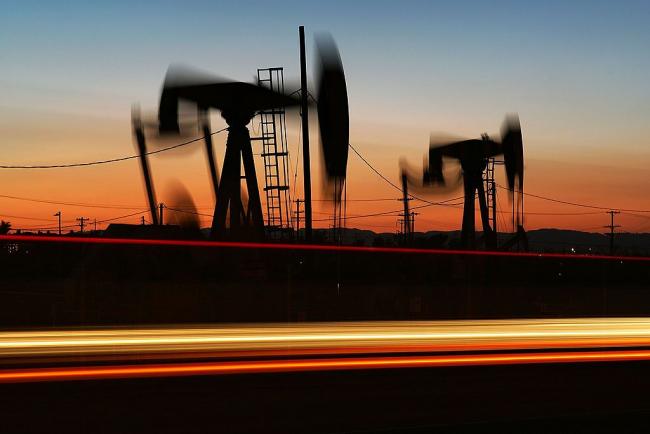(Bloomberg) -- Oil traded near $60 a barrel after a storm shut almost three-quarters of U.S. Gulf of Mexico crude production, even as lingering supply and demand concerns continue to dent the outlook.
Futures eased in New York after advancing 4.7% last week. About 73% of crude output was halted as of Sunday and some producers are preparing to return workers to offshore platforms as storm Barry weakens after making landfall. China’s economy slowed to a three-decade low during the second quarter amid a prolonged trade dispute with the U.S., while the IEA said Friday that there was a surprise increase in global stockpiles in the first half of this year.
Oil has been buoyed by shrinking U.S. crude stockpiles and rising tensions in the Middle East, which has prompted the U.K. to start talks with its allies about beefing up their military presence in the Persian Gulf to deal with the rising threat to shipping posed by Iran. The Organization of Petroleum Exporting Countries is also predicting a less than promising outlook, warning on Thursday of a glut in 2020 on the back of surging American shale.
“The storm led to some concerns, but the disruptions are now priced in,” said Michael McCarthy, chief market strategist at CMC Markets Asia Pacific Pty in Sydney, adding that the “Iranian situation remains tense.” Volumes are less than usual for this time of the day and that “does suggest caution,” he said.
West Texas Intermediate oil for August delivery fell 14 cents to $60.07 a barrel on the New York Mercantile Exchange as of 12:01 p.m. Singapore time. Prices added 1 cent on Friday, capping the biggest weekly gain since mid-June.
See also: World’s Top Crude Processor Succumbs to Asia’s Refining Slump
Brent for September settlement traded 6 cents lower at $66.66 a barrel on the ICE (NYSE:ICE) Futures Europe Exchange. Prices rose 3.9% last week. The benchmark global crude traded at a premium of $6.50 to WTI for the same month.
Exxon Mobil Corp (NYSE:XOM). and Chevron Corp. (NYSE:CVX) are among companies returning workers to their offshore platforms and restarting output in the Gulf of Mexico. The region accounts for 16% of total American crude oil production and under 3% of natural gas production, according to the Energy Department.
The International Energy Agency said Friday that production cuts by OPEC and its allies failed to prevent the return of a surplus in the first half of 2019 as supply exceeded demand at a rate of 900,000 barrels a day. China’s gross domestic product rose 6.2% in the second quarter from a year earlier, below the 6.4% expansion in the first quarter and matching economists’ estimates.
